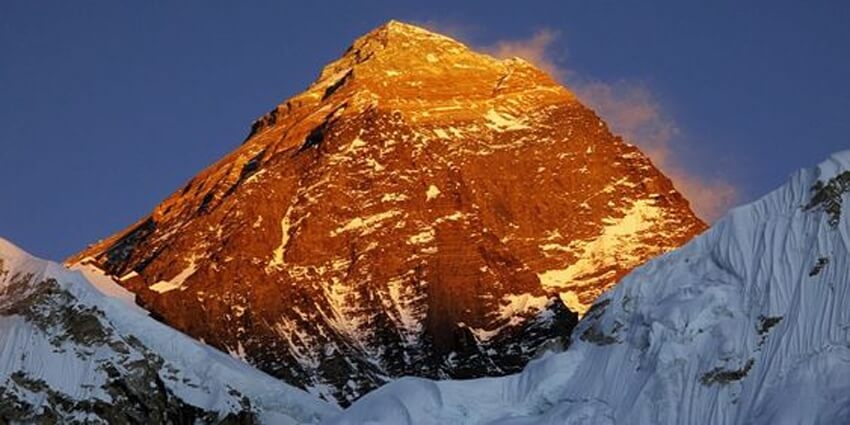
Nepal boasts two natural and eight cultural world heritage sites spread over six different districts, Solukhumbu (1979 AD), Rupandehi (1997 AD), Chitwan (1984 AD), Bhaktapur, Lalitpur and Kathmandu districts (1979 AD), The world heritage sites ranging from 110 metres Terai to 8848.86 metres Himalayan region. The objective of UNESCO is to promote the recognition, safeguarding, and conservation of cultural and natural heritage sites worldwide, considered to possess exceptional value for humanity.
The historical, cultural and natural heritage sites motivate millions of visitors yearly in Nepal. UNESCO classifies World Heritage Sites into cultural, natural, and mixed categories. Cultural sites consist of monuments, historic buildings, or archaeological sites, whereas natural sites feature areas of exceptional natural beauty or ecological significance. With 1,199 UNESCO World Heritage Sites spread across 168 countries listed as World Heritage Sites to enhance tourism, promote local and national pride, support conservation initiatives, and attract funding for upkeep and preservation.
Nepal enlisted ten UNESCO World Heritage Sites, Sagarmatha National Park, Chitwan National Park, Lumbini, Kathmandu Durbar Square, Patan Durbar Square, Bhaktapur Durbar Square, Changu Narayan Temple, Pashupatinath Temple, Boudhanath Stupa, and Swayambhunath Stupa.
Sagarmatha National Park covers an area of 1148 square kilometres in Solukhumbu district (241 air distance from Kathmandu), ranging from 2800 meters to 8848 meters in the Himalayan Region. This national park, recognized as a Natural heritage site, not only preserves diverse flora and fauna but also showcases the rich Sherpa culture and the history of Mount Everest, the highest peak in the world for millions of years.
Chitwan National Park, located in the Chitwan district (165 km away from Kathmandu), covers an area of 932 square kilometres, ranging from 110 to 850 meters in the Terai region. The UNESCO World Heritage Site is rich and diverse flora and fauna, including the Royal Bengal tiger, one-horned rhinoceros, elephants, various bird species, and the unique Tharu culture.
Lumbini in Rupandehi district (300 km far from Kathmandu) is a UNESCO World Heritage Site for its cultural significance to the Birthplace of Lord Buddha in 623 BCE. Lumbini covers an area of 2.56 square kilometres at 150 meters in the Terai region. The site preserves the Maya Devi Temple, the sacred garden, a Monastic zone representing different countries, and the Lumbini village.
Kathmandu Valley spreads 642 square kilometres with three districts - Kathmandu, Lalitpur, and Bhaktapur ranging from 1350 to 1541 meters in the Hilly Region. The valley enlisted 7 UNESCO World Heritage Sites, such as Kathmandu Durbar Square, Patan Durbar Square, Bhaktapur Durbar Square, Changu Narayan Temple, Pashupatinath Temple, Boudhanath Stupa, and Swayambhunath Stupa. Known as the exclusive tourist destination in South Asia, Kathmandu Valley boasts a rich history of 3200 years, featuring ancient civilizations, religious temples, monastery architecture, wooden and bronze art, royal palace squares, and Newari culture.
The UNESCO World Heritage sites are most important to Nepal's tourism, culture, art, economy, and civilization. Domestic and foreign visitors enjoy the cultural and natural heritage sites for sightseeing, trekking, mountaineering, wildlife safari, photography, shopping, festivals, cultural shows and museums with entrance fees. The World Heritage Committee, established by each country to the UNESCO World Heritage Convention, evaluates properties identified even by the Nepal government as meeting the criteria for World Heritage listing and may nominate them for inclusion on the World Heritage List in future.
1. The early medieval architectural complex of Panauti (1996).
2. Tilaurakot, the archaeological remains of the ancient Shakya kingdom (1996).
3. Cave architecture of Muktinath Valley of Mustang (1996).
4. The medieval palace complex of Gorkha (1996).
5. Ramagrama Stupa as the relic stupa of Lord Buddha (1996).
6. Khokana, the vernacular and its mustard-oil seed industrial heritage (1996).
7. Medieval Earthen-Walled City of Upper Mustang (2008)
8. Vajrayogini and Early Settlement of Sankhu (2008).
9. Medieval Settlement of Kirtipur (2008).
10. Rishikesh Complex of Ruru Kshetra (2008).
11. Nuwakot Palace Complex (2008).
12. Ram Janaki Temple (2008).
13. The medieval town of Tansen (2008).
14. Sinja Valley (2008).
15. Bhurti Temple complex of Dailekh (2008).
Sagarmatha National Park (19 July 1976) covers 1148 sq km in Solukhumbu District (124400 hectares), which ranges from 2845 m (Monjo) ...
Trip DetailsChitwan National Park is a natural UNESCO World Heritage Site (1984), the first national park of Nepal and the formal Royal Hunting ...
Trip DetailsLumbini Nepal (150 m) is 300 km southwest of Kathmandu, 18 km west of Bhairahawa Airport and 24 km north of ...
Trip DetailsSwayambhunath Stupa (5th century) is a UNESCO World Heritage (1979 AD) on a forested hill (0.6 sq km) viewpoint called Monkey ...
Trip DetailsBoudhanath Stupa is a UNESCO World Heritage (1979), the biggest stupa in Nepal is called Jhyarung Khashyor, Khasa Chaitya, ...
Trip DetailsKathmandu Durbar Square is a UNESCO World Heritage Site (1979) called Hanuman Dhoka Durbar Square after established Hanuman statue ...
Trip DetailsBhaktapur Durbar Square (1400 m) is a UNESCO World Heritage site (1979) with Taumadhi Square, Pottery Square, and Dattatraya Squares, ...
Trip DetailsPatan Durbar Square is a UNESCO World Heritage site (1979 AD), 7 km south of Kathmandu. Patan translates to beautiful city with ...
Trip DetailsPashupatinath is a sacred God Shiva temple and UNESCO World Heritage site (1979 AD) at Bagmati Riverbank in Kathmandu, Nepal. The ...
Trip DetailsChangu Narayan Temple is one of the most popular Narayan temples in Kathmandu Valley at mythical Champak Hill, Changu, Dolagiri ...
Trip Details
